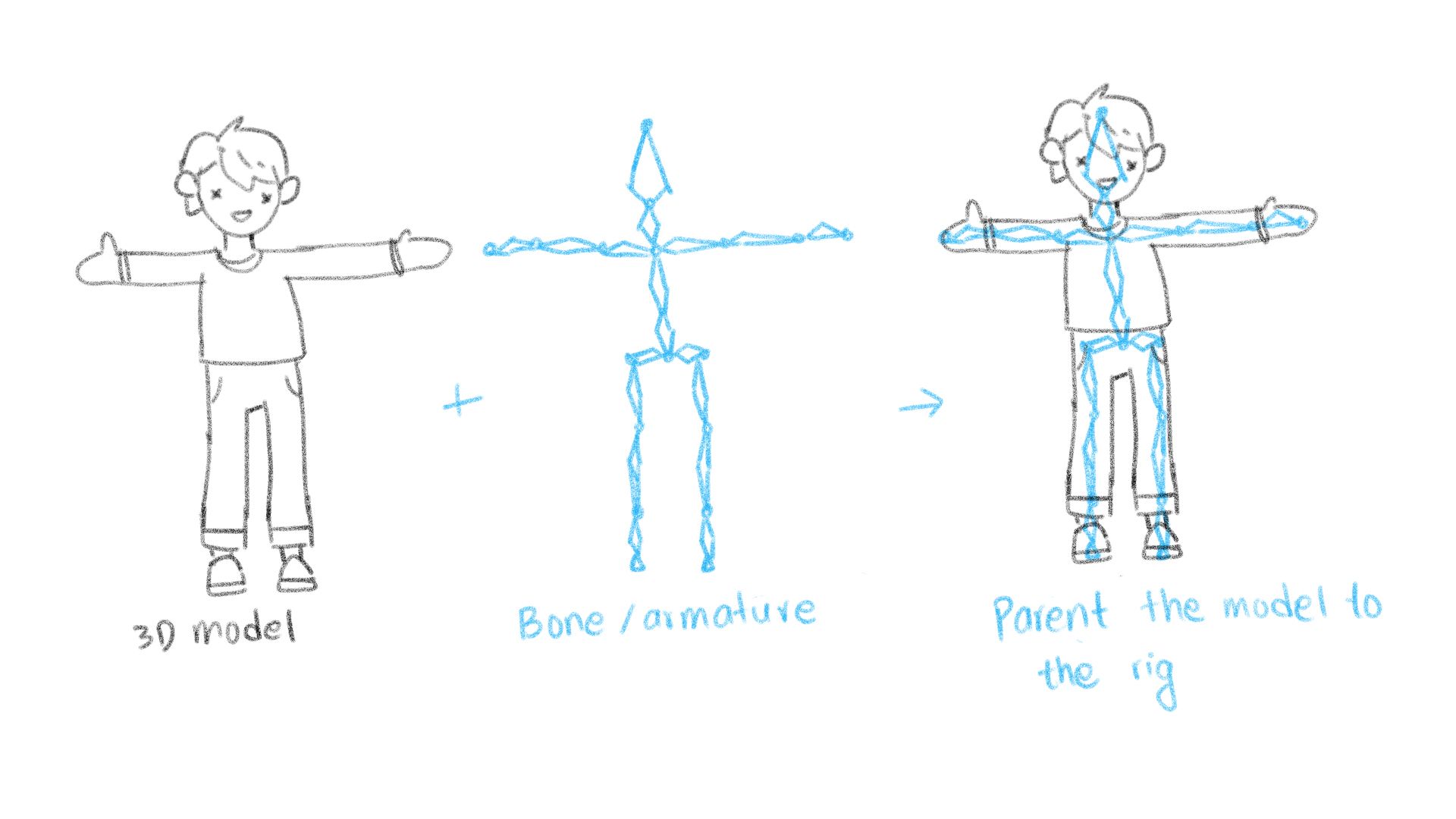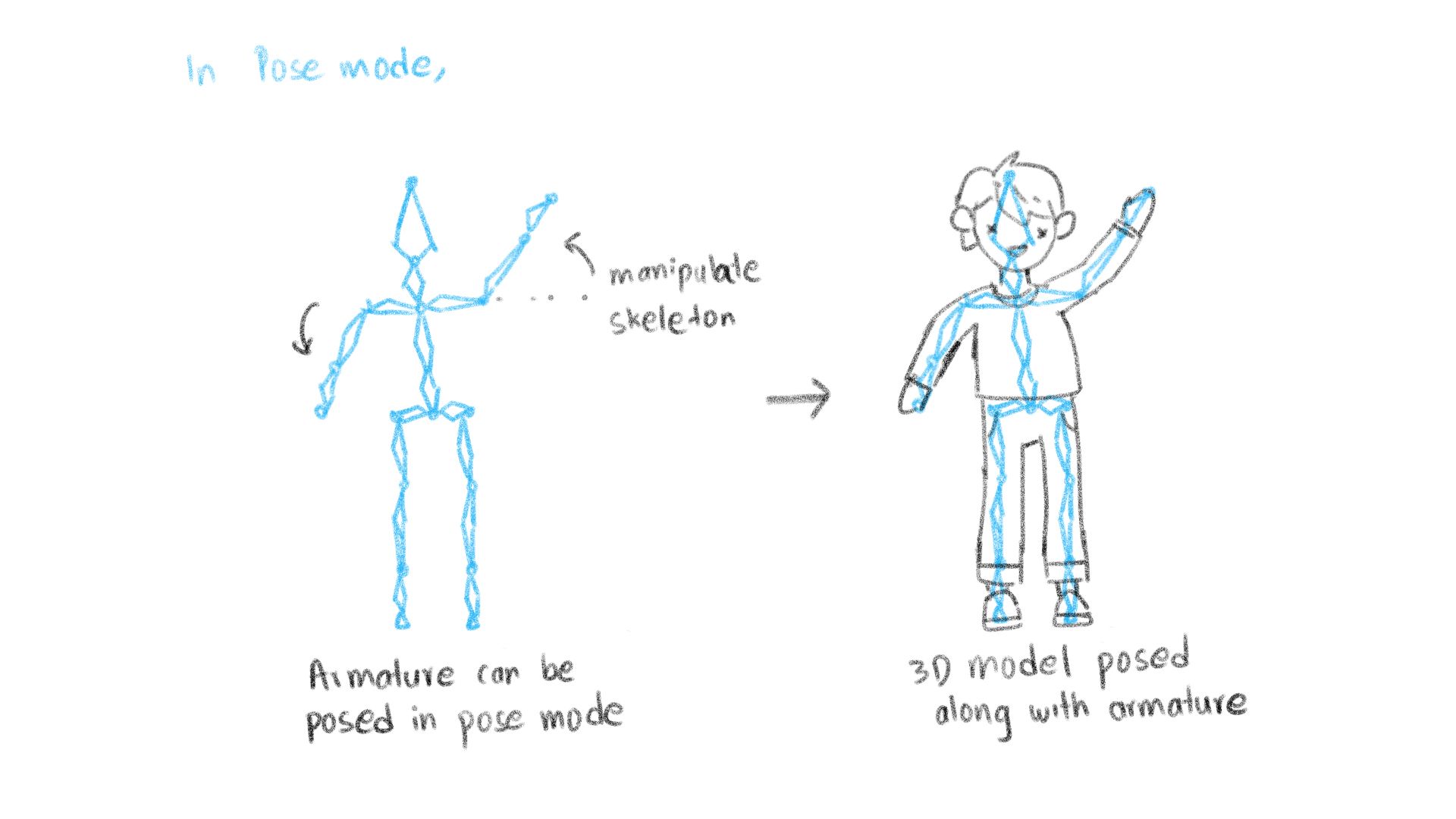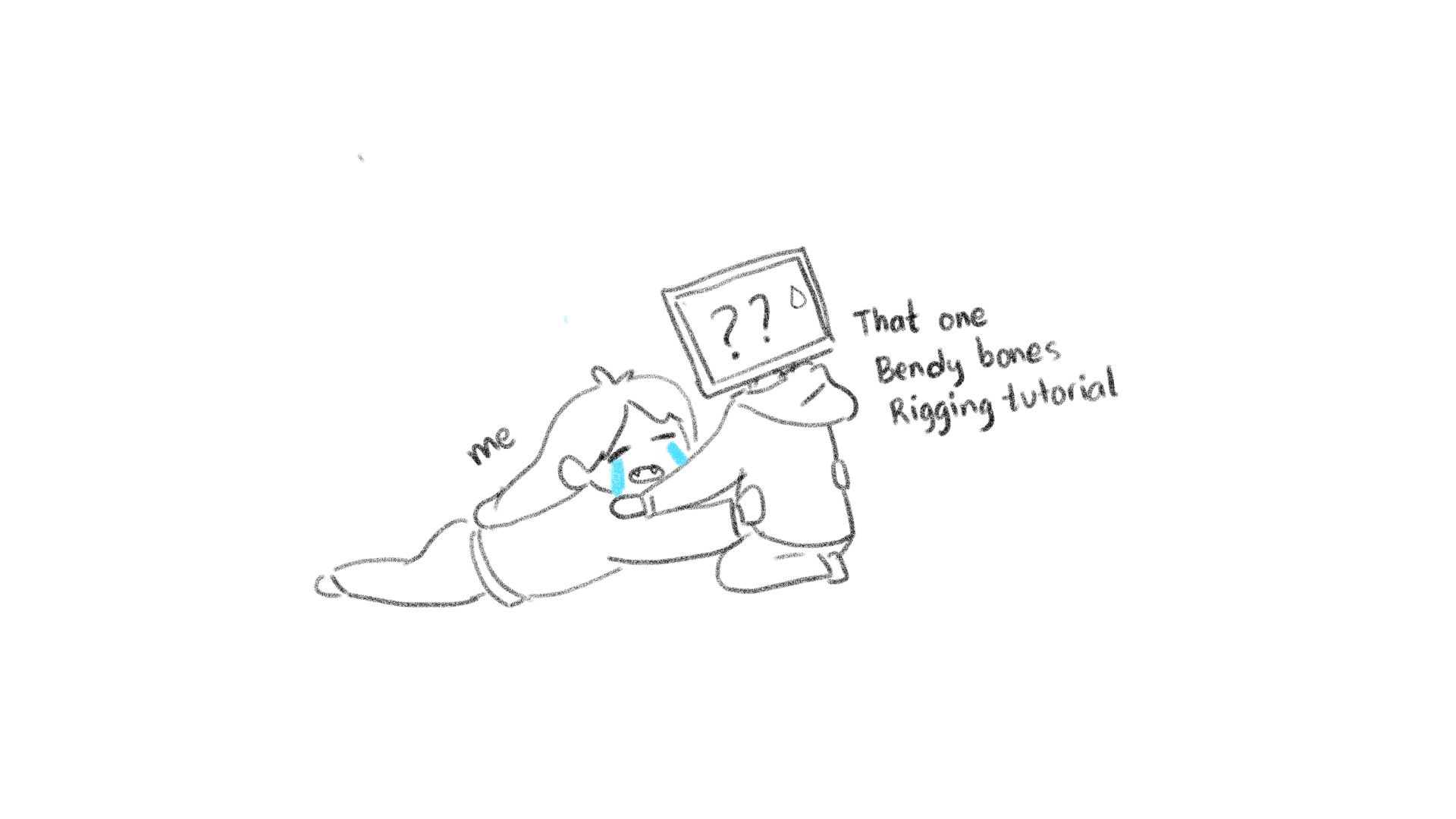Rigging was something I was terrified of. Who am I kidding... it still lowkey terrifies me.
Let's start at the beginning of my 3D learning journey. I wanted to learn 3D modeling because I wanted to make cute characters and aesthetic stylized 3D illustrations. That being said, I had no intention of ever learning to rig ever or even sculpting.
When I had my first experience with Blender, I thought that was a good decision. As Blender itself is so intimidating and all the things that can be done with it are still astounding and so vast. It can be used for 3D modeling, sculpting, rigging, animation (2D and 3D both), and even VFX. Let's not forget the 2D drawing with Grease Pencil.
If any of the terms I mentioned sounds alien to you then those are all super cool things that make 3D games, animated movies, and VFX supercool.
Only focusing on 3D modeling helped me get better at it faster and I was able to do what I had originally set out to do. I was successfully making 3D characters ranging from cats to humans to vampires in my own style. And I didn't even have to learn sculpting yet.

I was starting to get comfortable with my 3D modeling skills and now wanted to easily pose the characters I had made.
The only solution to that was to rig.
What is Rigging in Blender?
Rigging in Blender allows us to attach a skeleton to a 3d model. So attaching a humanoid skeleton to a human character model would allow for posing the character by manipulating the position of the skeleton.
After a bunch of tutorials, I was well on my way to rigging the characters I made with the most basic of humanoid skeletons. Rigging a human model was relatively easy. Blender auto-generates a human skeleton frame and I had to align the bones to my model, then move on to weight paint.
Later on, I found that instead of using the rig auto-generated by Blender I could also create my own armatures which was much more satisfying but a bit time-consuming.

After parenting the model to the rig, weight-painting should be done which is the most time-consuming task. Blender doesn't really understand which part of the model is affected by each of the bones. So weight painting is the process of assigning the weight value to each bone. That way when the character moves the hand, only the hand and the forearm move and not the whole torso.
If everything goes well then posing the skeleton should pose the character.

This was a relatively easy process. At this point, I thought I knew how rigging worked. But we just scratched the surface.
I had to rig characters at work which gave me the much-needed push towards approaching rigging. It was actually the first thing I had to do in my first week when I was hired. And lo and behold, it was not a human that I had to rig.
Terrified! I was in awe.
I was making the model fine which didn't even remotely resemble any of the things I had ever attempted to make at the time. Then I had to learn to rig that creature on the spot. I was wracking my brain and scouring the internet for help. That was the most stressful time I've had in quite some time. After two days of being stuck on that problem, I moved on to creating concept art. At home, I was watching Youtube for a decent tutorial for rigging.
When I finally found a Rigging with bendy bones tutorial, I wanted to cry.

I was trying to rig a creature that moved in a bendy/ elastic way with rigid humanoid bones 🤦🏻♀️. I thought that rigid bones were the only way to rig in Blender.
After trying, failing, a few coffees, and a mental breakdown. A short Youtube tutorial put me out of my misery. You bet the very next thing I did the next day was to rig that bendy creature.
Turns out we didn't really need that task at the time. The pressure I had been feeling was all in my head. I was able to put my newfound rigging skills to use later on in the project. So it was all worth learning.
There are still many tools in Blender that I have yet to learn. I plan on tackling sculpting next which sounds even more sophisticated than rigging.
Thanks for reading. Catch you in the next one!
